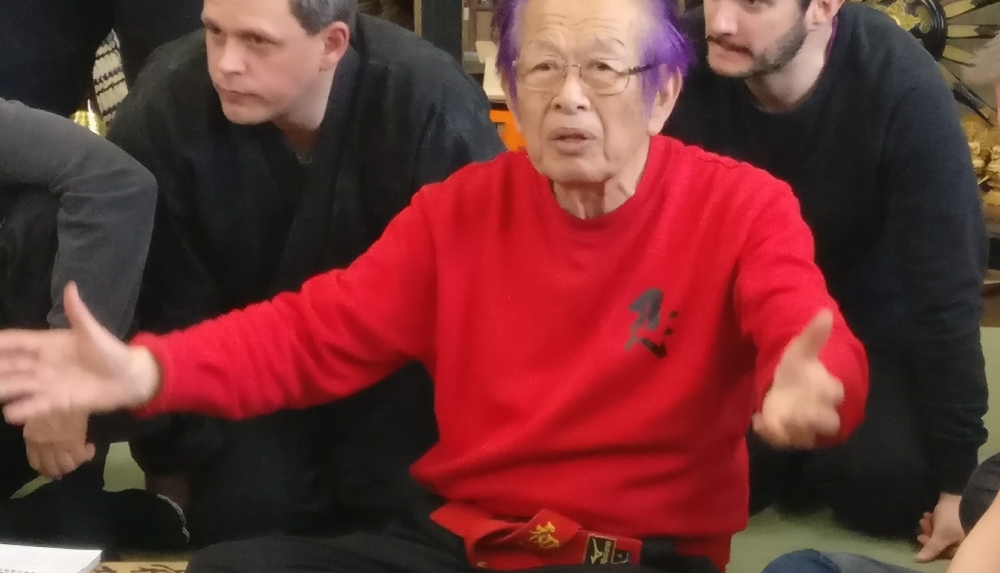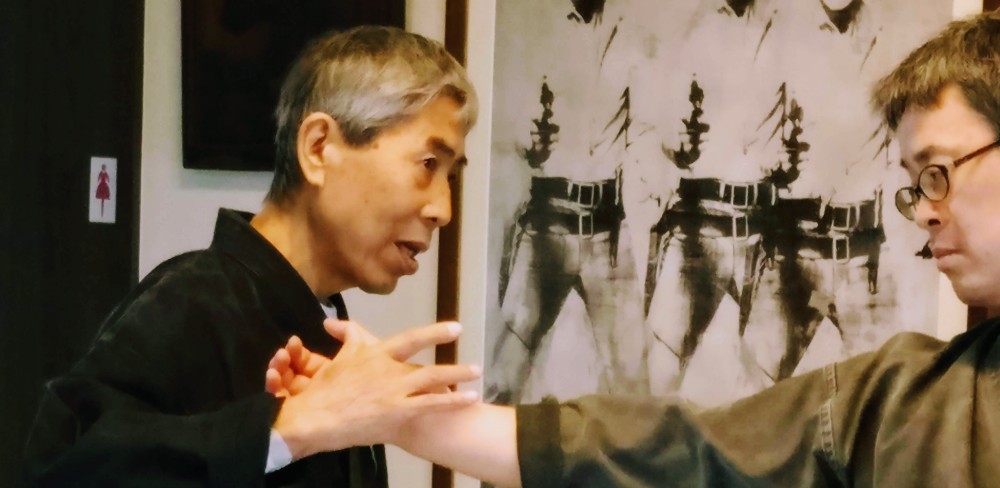From Shiro Kuma by kumafr

I used the word “tradition” voluntarily here. What is a tradition? Google says, “the transmission of customs or beliefs from generation to generation, or the fact of being passed on in this way.” What he did was to share the Bujinkan spirit with his older students (October 1997 and February 2015).
At lunch, he would take the temperature of the Bujinkan, and speak about the Bujinkan. I have good memories of those moments.
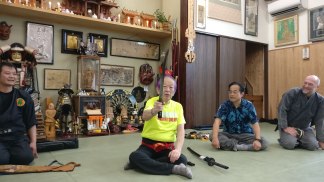
But in the recent Sundays, Sensei moved from “tradition” to history. He often speaks now about the old Jidai. (1) With better knowledge about history, he wants us to prepare the future Jidai of the Bujinkan. (2)
He wants us to understand the symbol of Samurai warfare, the sword.
Last Sunday, he arrived from his usual sword dealer with six new swords and detailed them to us. He said, “high ranks must understand the Japanese sword. This is the key to unlock the understanding of Mutō Dori.”
 History is significant when you train martial arts, this is not a sport. Japanese history is about survival, and these weapons made it possible.
History is significant when you train martial arts, this is not a sport. Japanese history is about survival, and these weapons made it possible.
By understanding the weapons, you get a glimpse on how you can move with them and survive in battle. And he wants the Dai Shihan to get this.
History comes from the Greek ἱστορία – historia, meaning “inquiry, knowledge acquired by investigation.” It is Rekishi in Japanese. History is the discovery, collection, organization, and presentation of information about past events. (3)
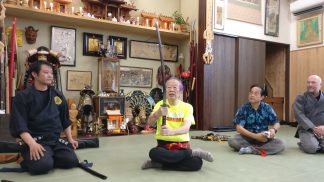 We have to study Rekishi should and investigate it seriously. That is if you want to get the knowledge of the Samurai.
We have to study Rekishi should and investigate it seriously. That is if you want to get the knowledge of the Samurai.
Our Waza were created during the Sengoku Jidai, (4) -what historians call the “Age of Warring States.” This period began with the Ōnin wars (1467-1477) and lasted for about a century. (5)
Oda Nobunaga emerged from this time of chaos and began the unification of the country. It will end with Hideyoshi, and bring Japan to peace with Tokugawa. This extended period of five centuries is the Bujinkan Jidai!
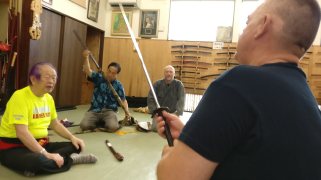 The history of the Samurai is what makes Japan so different from our own history. Initiated by Minamoto no Yoritomo with the Genpei War (fall of the Taira in 1185), a new Japan is born. (6)
The history of the Samurai is what makes Japan so different from our own history. Initiated by Minamoto no Yoritomo with the Genpei War (fall of the Taira in 1185), a new Japan is born. (6)
The victory of Tokugawa at Sekigahara in 1600 completes the transformation. (7)
Our fighting arts are the means with which these changes were carried out on the battlefield.
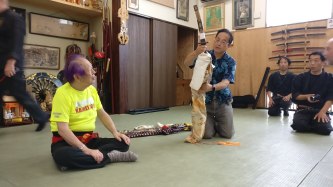
Ignoring Rekishi is limiting the Bujinkan to another sport martial arts.
Thus the reason why Sensei wants us to study it.
The dōjō logic replaces the military needs with a form of business at the beginning of the 17th century. It is very far from the Yoroi logic developed on the battlefield.
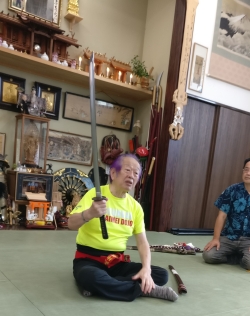
This is during this period that the Katana (Edo) replaces the Tachi (Sengoku). As a consequence, Tameshi Giri will develop only after the Samurai stopped fighting. (8)
This is the knowledge Sensei wants us to get.
One thing Sensei said on Sunday, was that “you should know what weapon is good for you.” Study them and use the ones that fit your abilities.
The Bujinkan Rekishikan (9) covers the 12th to the 17th century.
It should be studied like any other Waza.
Rekishikan can lead to Reishikikan, and give us “the intuition to have the correct manners of a knight.” (10)
